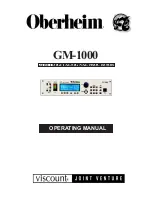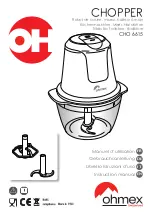
1-8
System Bus, HDI16, and Interrupt Signals
1.5 System Bus, HDI16, and Interrupt Signals
The system bus, HDI16, and interrupt signals are grouped together because they use a common set of
signal lines. Individual assignment of a signal to a specific signal line is configured through registers in
the System Interface Unit (SIU) and the Host Interface (HDI16). Table 1-4 describes the signals in this
group.
Note:
To boot from the host interface, the HDI16 must be enabled by pulling up the HPE signal line
during
PORESET
. If the HPE signal is pulled up, the configuration word must then be loaded
from the host. The configuration word must set the Internal Space Port Size bit in the Bus
Control Register (BCR[ISPS]) to change the system data bus width from 64 bits to 32 bits and
reassign the upper 32 bits to their HDI16 functions. Never set the Host Port Enable (HEN) bit in
the Host Port Control Register (HPCR) to enable the HDI16, unless the bus size is first changed
from 64 bits to 32 bits by setting the BCR[ISPS] bit. Otherwise, unpredictable operation may
occur.
Although there are eight interrupt request (IRQ) connections to the core processor, there are multiple
external lines that can connect to these internal signal lines. After reset, the default configuration includes
two IRQ1 and two IRQ7 input lines. The designer must select one line for each required interrupt and
reconfigure the other external signal line or lines for alternate functions.
Table 1-4. System Bus, HDI16, and Interrupt Signals
Signal Data
Flow
Description
A[0–31]
Input/Output
Address Bus
When the MSC8101 is in external master bus mode, these pins function as the
address bus. The MSC8101 drives the address of its internal bus masters and
responds to addresses generated by external bus masters. When the MSC8101 is
in Internal Master Bus mode, these pins are used as address lines connected to
memory devices and are controlled by the MSC8101 memory controller.
TT[0–4]
Input/Output
Bus Transfer Type
The bus master drives these pins during the address tenure to specify the type of
transaction.
TSIZ[0–3]
Input/Output
Transfer Size
The bus master drives these pins with a value indicating the number of bytes
transferred in the current transaction.
TBST
Input/Output
Bus Transfer Burst
The bus master asserts this pin to indicate that the current transaction is a burst
transaction (transfers four quad words).
IRQ1
GBL
Input
Input/Output
Interrupt Request 1
1
One of eight external lines that can request a service routine, via the internal
interrupt controller, from the SC140 core.
Global
1
When a master within the chip initiates a bus transaction, it drives this pin. When
an external master initiates a bus transaction, it should drive this pin. Assertion of
this pin indicates that the transfer is global and it should be snooped by caches in
the system.













































